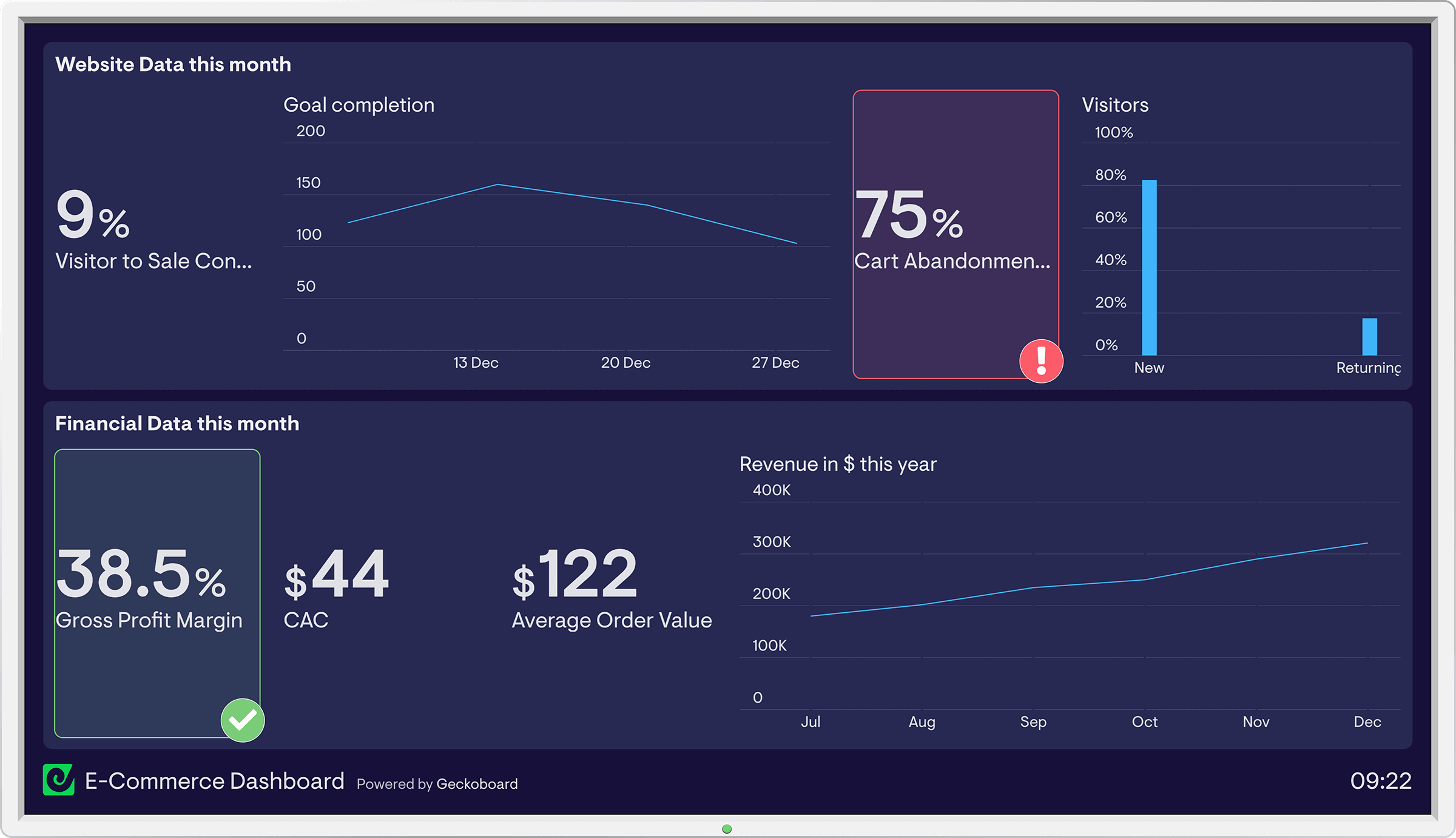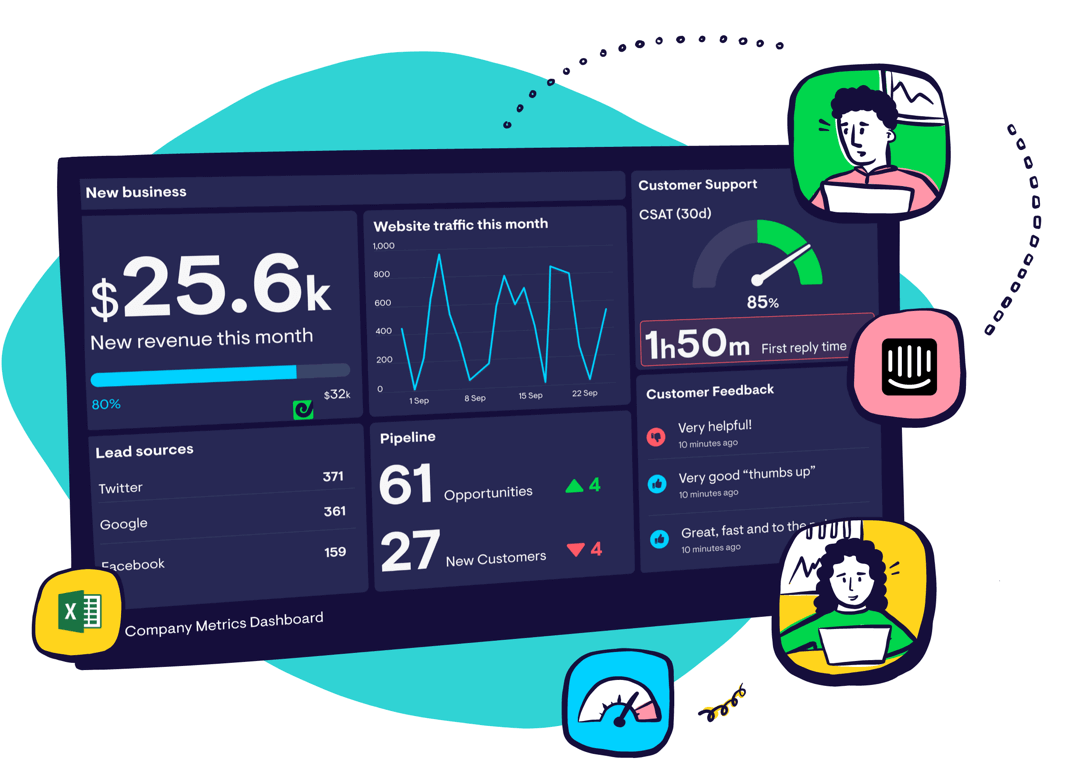Gross Profit Margin
What is Gross Profit Margin?
Gross profit margin (GPM) is the percentage of revenue that is actual profit before adjusting for operating costs, such as marketing, overhead, and salaries.
The two factors that determine gross profit margin are revenue and cost of goods sold (COGS). COGS is what it directly costs the company to make a product. Labor costs are part of COGS, for example. COGS also includes variable costs that change as production ramps up or down. Raw materials and packaging are examples of variable costs.
What Does Gross Profit Margin Tell You?
Gross profit margin signals whether your sales and production processes are running efficiently. If you have a low GPM, that may mean your COGS is too high. You could then analyze and improve the production process to lower your costs.
Your gross profit margin should be fairly steady (unless you’re making major changes to your business model). Frequent changes might mean your expenses are changing more often than they should be, or that your sales aren’t steady.
A higher gross profit margin means a lower ratio of COGS to total revenue, which, in turn, means a higher potential for profit. As Mahesh Vellanki, former principal at Redpoint Ventures, put it: “[Gross Margin] is a proxy for the profit potential of a business.”
It’s often helpful to look deeper than just the overall GPM of the company. You can look at the gross margin of specific products to see which ones bring in the most profit. This is useful for choosing where to concentrate your marketing efforts.
Don’t panic if you discover low margins. It’s better to know if your product isn’t profitable so you can take steps to reduce costs or increase revenue.
“It’s okay to have low-margin products. It is not okay to be unaware of the lack of profit those items are generating for your store,” says Meredith Boll, a former partner at Evance Marketing.
How to Calculate Gross Profit Margin
[ ($) Total Revenue - ($) Cost of Goods Sold ] / ($) Total Revenue X 100 = (%) Gross Profit Margin
Calculate your gross profit margin by first subtracting the cost of goods sold from your total revenue. Then, divide the resulting gross profit by the total revenue, and multiply by 100 to generate your gross profit margin (%).
The time frame for your revenue and COGS numbers depends on your sales cycle. You can choose to do daily, weekly, monthly, or whatever makes the most sense for your company.
Say, for example, your total revenue this week is $1,000, and your cost of goods sold is $700. The gross profit in this example is $300. Your gross profit margin would be 30%.
[($1,000 - $700) / $1,000] x 100 = 30%
You’ll use the same basic formula to find the gross profit margin for a single product or for the entire company. Keep in mind that you can’t find the average gross profit margin for your company by combining product GPMs. You’ll need to recalculate by using the total revenue and COGS for the company.
Gross Profit Margin versus Markup
One distinction that can be confusing is that between gross profit margin and markup. You calculate both by using total revenue and COGS, but the two KPIs give you different information:
- Gross profit margin is the gross profit divided by the total revenue.
- Markup is the gross profit divided by the cost of goods sold.
If your total revenue this week is $1,000 and your cost of goods sold is $700, then your gross profit margin would be 30%, and markup would be 42.9%.
[($1,000 - $700) / $1,000] x 100 = 30% Gross Profit Margin
[($1,000 - $700) / $700] x 100 = 42.9% Markup
Average Gross Profit Margin
A “good” gross profit margin will vary by company. But if you’re new to calculating gross profit margin, you may want a baseline for comparison.
Industry averages can give you an idea of a general gross margin to aim for. As of early 2020, online retail had an average GPM of 45%.
Should you track Gross Profit Margin?
Gross profit margin is a critical metric and certainly worth checking periodically. But it fails to account for significant operating costs. That means it may not offer a complete view of your company’s financial health.
Pros
Gross profit margin is a vital health metric because it keeps the focus on growing profits, not just revenue. It immediately provides context because it shows the percentage of profit, unlike gross profit, which shows an absolute profit value without the comparison to total revenue.
This metric also highlights potential areas for improvement. Looking at how profitable a product is will help determine whether to increase prices, reduce production costs, or discontinue a product altogether.
GPM can also help you decide where to invest your marketing spend. For example, say you are running a special promotion to increase product purchases. Tracking gross profit margin is an effective way to monitor and measure the profitability of the promotion. If it’s profitable, you might extend the promotion or run it again at a later date. If not, you can make changes or scrap it altogether.
Cons
Gross profit margin offers a limited view of whether or not a company, as a whole, is profitable. It doesn’t account for operating expenses, such as payroll, overhead, and marketing spend.
For a more complete view of profitability, you would need to calculate net profit margin (NPM). NPM factors in operating costs, taxes, and other expenses. Giles Thomas, an ecommerce growth consultant and the founder of AcquireConvert, notes that you can’t see a clear picture of your profit without looking at overhead. As he puts it:
“If you change your business model, like offering free shipping, you can make more money, but still make less profit because of increased overheads.”
Like any single rate, gross profit margin can’t tell you everything. It is most useful when tracked along with other metrics. Tracking operating income (also known as operating profit) as well as GPM will help you see a more complete picture of how profitable your product or company is. If you have an app, you might also look at revenue per user to see how effective your marketing efforts are.
Enhance Your Dashboard by Tracking Gross Profit Margin
Tracking gross profit margin keeps your focus on profitability, not just revenue. Use this figure to decide whether you need to make changes to pricing or to the production process.
Adding this KPI to your Geckoboard dashboard is particularly useful for monitoring the success of a promotion. You can watch your GPM and see how it changes over the lifetime of the campaign.

If you’re adding gross profit margin to your dashboard, here are a few other ecommerce KPIs you might want to track:
Want to create a dashboard using this metric? Check out these example Ecommerce Dashboards.
